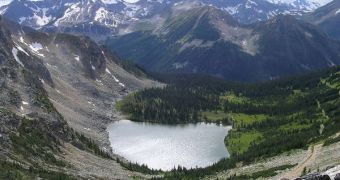A new comparative research has revealed the fact that the main factor creating differences between fish production levels in clear mountain lakes and brown forest lakes is light, and not access to nutrients, such as previously held. The counter-intuitive discovery was made by experts at the Climate Impacts Research Center (CIRC), led by Associate Professor Jan Karlsson, AlphaGalileo reports.
“In the brownest lakes sunlight can’t penetrate more than about two meters. In clear mountain lakes, the light can reach down to depths of 15-20 meters and lead to high production of algae on lake bottoms,” Karlsson explains the difference. One of the main reasons why low-lying lakes turn brown is the fact that organic materials constantly keep being washed into them. As they accumulate, they start preventing light from penetrating at a significant depth, adversely affecting the entire local ecosystem.
Among the most severely affected classes of organisms are the algae, which are heavily dependent on sunlight for triggering photosynthesis. Without this fundamental process, they cannot survive, and fuel the food chain that eventually reaches a complexity that allows it to sustain large fish populations. The bottom-dwelling animals that feed on algae are a favored meal for fish, but, if there is no food, both of these populations collapse in a short time frame.
In mountain lakes, less organic material goes into the water, which, therefore, allows light to penetrate at sufficient depths to sustain healthy alga populations. Bottom-dwellers also flourish, which means that fish have a sustainable source of food. But this natural cycle is endangered by climate change and global warming. As precipitation patterns and temperature lanes shift, vegetation climbs higher on mountains, increasing the amount of organic debris that gets spilled in the lakes.
“The climate impacts lakes, and in the long run we can expect more brown lakes with reduced productivity,” Karlsson concludes. The new study, entitled “Lake Ecosystem Response to Environmental Change (LEREC),” was funded by the Swedish Research Council Formas, and appears in this week's issue of the scientific journal Nature.

 14 DAY TRIAL //
14 DAY TRIAL //